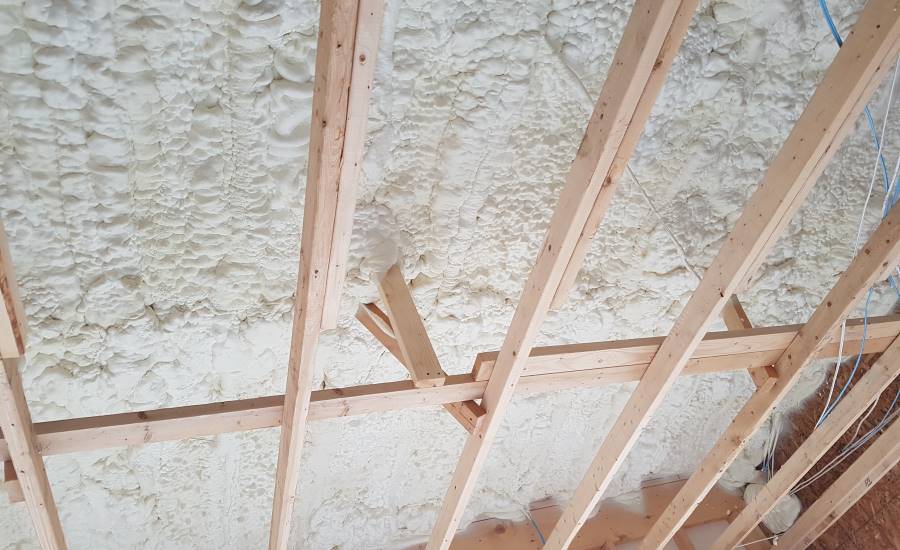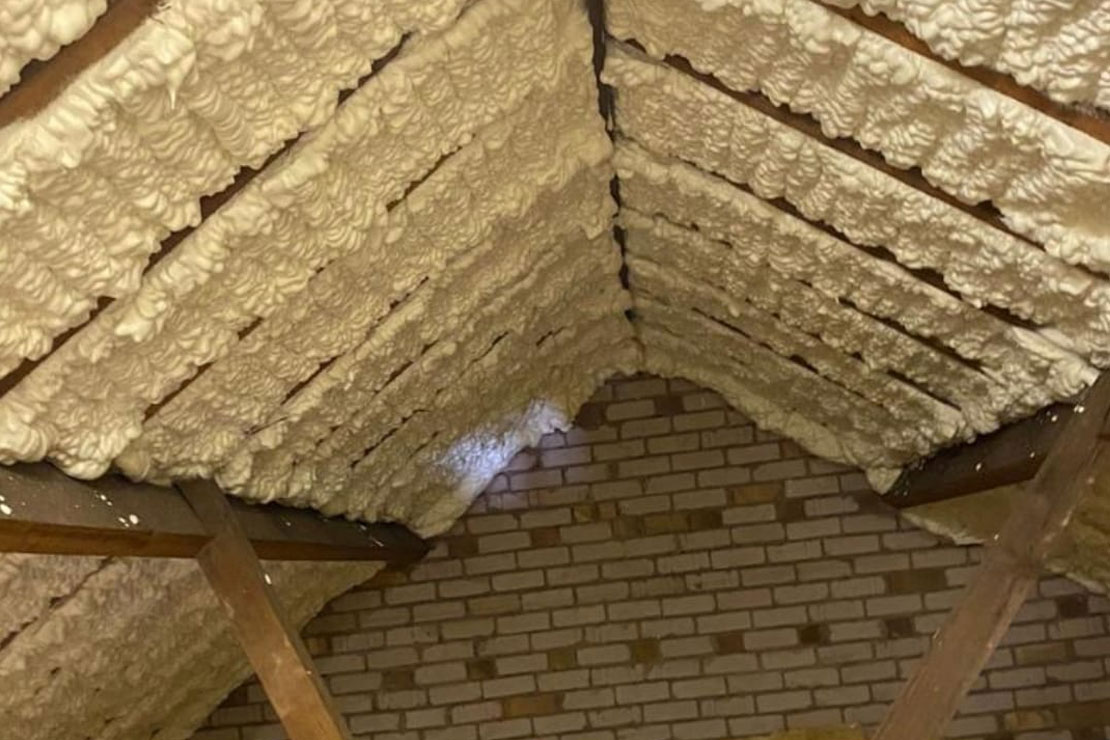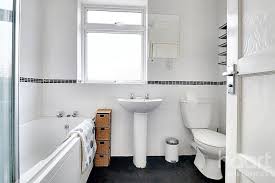
Closed-cell spray foam insulation offers unparalleled advantages in structural reinforcement, thermal efficiency, and moisture resistance for residential, commercial, and industrial buildings. Its dense, rigid composition strengthens walls and roofs, enhances load-bearing capacity, and creates a seamless barrier against air and vapor infiltration. Unlike open-cell spray foam or traditional fiberglass insulation, closed-cell spray foam consistently outperforms in longevity, durability, insulation value, and protective capabilities.
This article presents a detailed exploration of the superior properties of closed-cell spray foam, offering technical data, comparison charts, essential decision-making factors, market trends, and clear answers to commonly asked questions to provide a complete understanding of its practical and technical benefits.
Understanding Closed-Cell Spray Foam
Closed-cell spray foam is a high-density polyurethane foam composed of tightly packed, closed cells filled with a gas that enhances insulation performance. Unlike open-cell foam, it maintains a rigid structure after curing, providing superior mechanical strength and environmental resilience.

It is applied as a liquid and expands rapidly to fill cavities and create a monolithic insulation layer that significantly reduces thermal bridging and air leakage, key factors in building envelope performance.
Key Attributes of Closed-Cell Spray Foam
| Attribute | Details |
| Structure | Rigid, dense, closed cells |
| Typical R-Value | R-6 to R-7 per inch |
| Water Resistance | High (acts as moisture barrier) |
| Air Barrier Capability | Excellent (meets ASTM E2178) |
| Strength Contribution | Increases wall racking strength by up to 300% |
| Cost Compared to Other Insulations | Higher initial cost, significantly lower lifetime cost |
| Sound Dampening | Moderate |
Bonus Tip: Always request third-party certifications and testing data when selecting a closed-cell spray foam product for critical projects.
Comparison of Closed-Cell Spray Foam vs Other Insulations
| Feature | Closed-Cell Spray Foam | Open-Cell Spray Foam | Fiberglass Batts |
| Density | High | Low | Low |
| R-Value per Inch | 6.0–7.0 | 3.5–4.0 | 2.2–2.7 |
| Water Resistance | High | Low | None |
| Structural Strength | Excellent | Poor | None |
| Air Seal Capabilities | Excellent | Moderate | Poor |
| Typical Applications | Exterior walls, roofs, below-grade | Interior walls, soundproofing | Attics, walls |
| Lifespan | 50+ years | 20–30 years | 10–15 years |
| Resistance to Mold | Very High | Moderate | Low |
Bonus Tip: In hurricane-prone areas, closed-cell spray foam not only provides insulation but also enhances a building’s resilience to high wind uplift pressures.
Technical Specifications of Closed-Cell Spray Foam
| Specification | Range |
| Density | 2.0 to 2.5 lb/ft³ |
| Compressive Strength | 25–50 psi |
| Water Vapor Permeability | <1.0 perm at 1.5 inches thickness |
| Closed-Cell Content | Greater than 90% |
| Flame Spread Rating | <75 (ASTM E84 compliance) |
| Service Temperature Range | -40°F to +200°F |
| Dimensional Stability | Excellent (<2% change) |
| Adhesion to Substrates | Very High (wood, masonry, metal) |
Bonus Tip: Always use a certified applicator to guarantee foam quality and adhesion, especially for roofing and below-grade installations.

Things to Consider Before Making a Decision
Choosing closed-cell spray foam involves careful evaluation of multiple project-specific factors:
- Budget: Closed-cell foam is more expensive upfront but often leads to significant energy savings over the building’s lifetime.
- Building Use: Critical for structures where moisture protection, air sealing, and strength enhancement are essential.
- Local Climate: Particularly beneficial in regions experiencing extreme weather, temperature swings, or high humidity.
- Installation Conditions: Must be applied within specific temperature and humidity ranges to ensure correct curing.
- Vapor Barrier Requirements: Functions effectively as a Class II vapor retarder when installed at specified thicknesses.
- Code Compliance: Always ensure compatibility with local building and energy codes, including fire resistance standards.
- Long-Term Energy Savings: Can contribute to achieving certifications like LEED or ENERGY STAR through improved building envelope performance.
Market Insight: According to Grand View Research (2024), the global spray foam insulation market is projected to exceed USD 3 billion by 2030, fueled by rising demand for sustainable and energy-efficient building materials.
Common Questions About Closed-Cell Spray Foam
Does closed-cell spray foam strengthen a building?
Yes. Closed-cell spray foam increases the racking strength of walls significantly, helping structures resist lateral forces like wind and seismic activity.
How thick should closed-cell spray foam be applied?
Typically, a minimum of 2 inches is recommended for insulation and vapor barrier purposes, though thickness requirements may vary based on climate zone and application type.
Is closed-cell spray foam waterproof?
While it is not classified as “waterproof,” closed-cell foam is highly water-resistant, preventing bulk water migration through wall assemblies and roofs.
How long does closed-cell spray foam last?
Closed-cell foam can maintain its performance for over 50 years, matching or exceeding the life expectancy of most building envelopes.
Can closed-cell spray foam be used in cold climates?
Absolutely. It excels in cold climates by minimizing thermal bridging, preventing condensation, and maintaining high R-values even under subzero temperatures.
Is closed-cell spray foam environmentally friendly?
Although it uses chemical blowing agents, many modern formulations prioritize low global warming potential (GWP) and comply with environmental standards.
Make the Right Decision
Closed-cell spray foam provides unmatched advantages in structural strength, moisture control, thermal resistance, and longevity. Choosing this material can dramatically enhance the durability and energy efficiency of any building project. Carefully assess your project’s environmental conditions, structural needs, and budgetary constraints to ensure optimal results. The right insulation decision today builds stronger, safer, and more sustainable structures for tomorrow.




